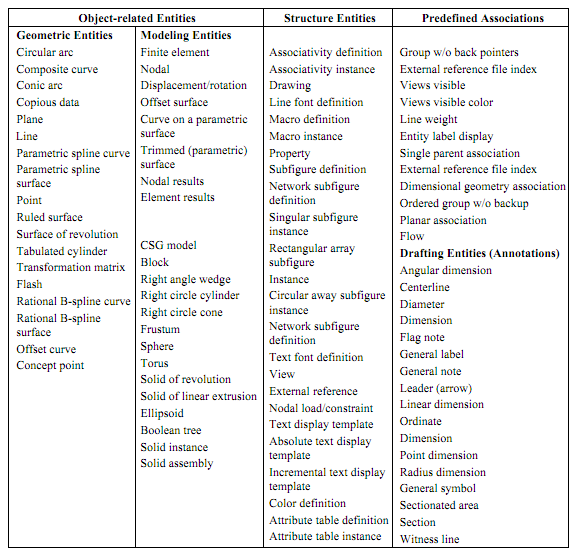Elements of IGES:
IGES has records of 80 character length that are presented by the 80 columns card format; where columns 1-72 hold information in ASCII code and columns 73-80 hold an alphabetic character followed by a serial number to mention sections.
An IGES file contain six parts, involving a flag section, directory entry section, start section, global section, parameter data section, and terminal section .
Table: Elements of IGES Version 4.0

- The flag section mentioned if the file is in binary or in a compressed ASCII format. It cannot be utilized when the contents are represented by ASCII characters. If the binary presentation is chosen, the file may be compacted by 70%.
- The start section contains comments; this provides human readable comments keyed in by the user and have information for the receiving station.
- The global section holds information explaining the pre-processor and data required by the post-processor to handle the file.
- The directory entry section explained all IGES entities specified in the file. The entities are the several geometric elements involving points, curves, surfaces and relations that are collections of similar structured entities; annotations as dimensions, viewing angles and notations, and structure elements as line font definitions, drawing specific data, macro definitions, and so on.
- In the parameter data section, the parameters of the particular entities are stored in a free format.
- The terminate section has a statistic indicating the size of each section that is represented by the last sequence number of a section.
While IGES is a commonly utilized interface it has various problems. Version 1.0 was criticized for its enormous file size and redundancy. This problem was less in Version 2.0 by introducing the binary format for setting up files. A difficulty exists of repeated definitions among the data entry section and the parameter data section, and also files are not very readable.